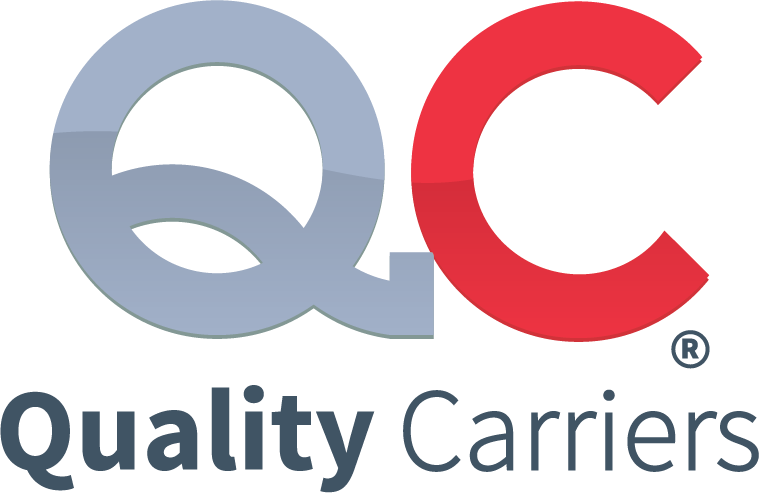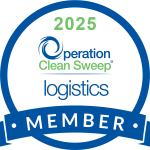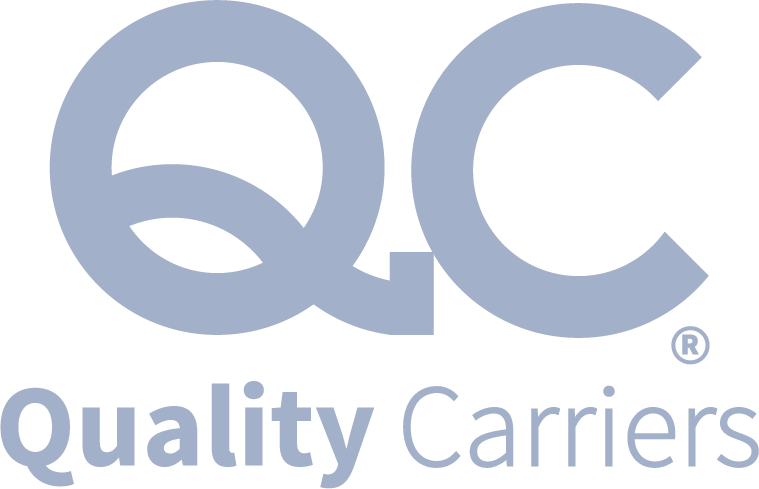Our owner-operator guide helps you determine if becoming a trucking owner-operator is right for you. Being an owner-operator can be a great way for you to start your own business, and drive for large carriers. But before becoming an owner-op, you first need to understand what it takes.
What is an owner-operator?
An owner operator is a small business owner who operates their own truck. In the trucking industry, owner-operators are also referred to as “freelancers” or “independent contractors.”
An owner-operator is someone who owns and operates his or her own truck. They are not employed by a single company but instead are hired by different companies on a contract basis. As such, they have more freedom in choosing their load and schedule.
Most owner-operators are small business owners who own their own trucks and hire drivers to work for them but there are also some large companies that employ owner-operators exclusively.

How to get started
Becoming an owner-operator can be a great way to make money and run your own business. But it’s not easy. You have to start your own trucking company, get your own truck, find customers and manage all the paperwork involved in running a business.
Here are the steps on how to get started:
- Evaluate your personal situation.
Trucking is a great career choice for many people and it is a great business.
If you have a family, consider the long hours away from home and the time spent away from them. Also, you need to make sure that you have a good support system in place.
You’ll gain a lot of experience in this business that will help you understand how freight moves around the country and how everyone fits into that process. - Assess your finances.
Before taking the plunge into the trucking business, assess your finances and determine how much you can afford to put into the business.
You will need to determine how much money you have in savings or assets that you can convert into cash to buy a truck. Also, you need to cover expenses, the cost of fuel, insurance and other expenses for your new business and as well as some cushion for unexpected expenses.
If you don’t want to purchase a truck there are also lease options that will help you get started with a lower start-up cost.
- Get a commercial driver’s license (CDL).
If you drive a commercial vehicle, such as a truck, you need a commercial driver’s license (CDL). The federal government sets the standards for all CDLs.
To get a CDL, you must:- Be 18 years old (in some states, you must be 21).
- Pass an eye exam and a written knowledge test on driving rules and traffic signs. (Some states also require an on-the-road skills test.)
- Have a valid state driver’s license or be legally eligible to apply for one in your state of residence.

- Form a business.
If you’re going to be an over-the-road owner-operator, you need to have a trucking business. This means that you will need to form an LLC or corporation.
An LLC is a limited liability company. This can help protect your personal assets and have them treated separately from your business assets.
A corporation is a legal entity that can be formed by filing documents with the state and paying a fee. A corporation offers more limited liability protection than an LLC.
Once you’ve decided what type of business structure you want, complete the application and pay the necessary fee to submit it. - File for USDOT number.
To obtain a USDOT number, file an application through the FMCSA Website. This is the federal identification number that all commercial vehicles must have.
After your application has been accepted, you’ll be assigned a unique 17-digit number that will be visible on your truck’s license plate. - Get your trucking authority.
To operate as an owner-operator, you must obtain your MC number by applying with the Federal Motor Carrier Safety Administration (FMCSA). The FMCSA regulates interstate commerce by setting the standards for commercial drivers and their vehicles. If you’re interested in becoming an independent contractor driver, applying for an MC number is free and easy to do online. - Purchase truck insurance.
Truck insurance is extremely important, especially for owner-operators. Truck insurance covers your truck and its contents in the event of an accident or theft. It also provides liability coverage for injuries to other people, damage to their property, and medical expenses caused by a crash involving your truck.
FMCSA requires at least $75,000 in liability coverage in order to operate legally on public roads in most states. - Decide whether to buy or lease a truck.
The decision to buy or lease a truck is one that’s usually not made lightly. It’s a major financial commitment, and it can affect your business for years to come.
Running your own trucking business for years and wanting to build equity in your assets, buying may be the better option. Buying allows you to control the vehicle’s maintenance schedule and customize its features while also giving you access to tax breaks that may not be available with leasing.
Leasing a truck is a good option if you don’t have substantial operating capital or if you aren’t sure how long you’ll need the truck. Quality Carriers offer Trucks for Lease program. Drivers can explore excellent opportunities through the Quality Carriers “New Lease on Quality” program and find their lane today. - Outline a business plan.
Before you start your trucking career, you’ll need to come up with a business plan for your trucking company. It’s a plan that guides your actions and helps you make smart financial decisions over the long term.
A good business plan should include:- A description of your target audience. Who do you want to sell to? Consider who will be buying your products and services and where they live.
- How much money you need to make. This figure is based on your revenue goals for the next year or two, along with estimated expenses for that time period.
- A detailed list of all expenses related to starting a trucking company, including:
- Startup costs (leasing equipment and purchasing a truck)
- Vehicle maintenance costs (fuel, tires, oil changes)
- Driver training – Quality Carriers offer the best training. We assure you that our drivers are the best-trained and best-performing drivers in the industry.
- Choosing a Carrier
Choosing the right carrier is one of the most important decisions you will make. Your carrier will be your partner in business, and it will affect your bottom line. Choosing the wrong one can lead to financial disaster.
You need to know what kind of carrier you want to work with, what kind of equipment they use, how many trucks they have, how many drivers they hire, how many miles per week they drive, and more.
- Use load boards to find freight.
One of the best ways to get started as an owner-operator is to use load boards. These sites allow drivers to find freight from different companies and keep up with where they are needed most on a given day or week.
Load boards are an essential tool for finding freight as a private business owner who works as an independent contractor or sole proprietor. You don’t have much time in between jobs for downtime, so having a load board at your fingertips makes it easy for you to find work when you need it most. - Get an electronic logging device (ELD).
The FMCSA requires all commercial vehicles including trucks to be equipped with a compliant ELD.
You can register for a free ELD account on the FMCSA’s website. You will receive a unique 18-digit ID number that allows your carrier to transmit data from its fleet of CMVs.
Quality Carriers works to ensure the safety to all our drivers by partnering with the leading providers of Electronic Logging Devices and Electronic On-board Recording Devices, and we are constantly researching other safety-related technologies.

How to sustain your business
- Increase cash flow with invoice factoring.
Invoice factoring is a financing method that allows you to get paid sooner. With invoice factoring, you can sell your invoices to a third-party company, who will pay you immediately and take care of collecting from your customers. Invoice factoring can help you increase your cash flow by as much as 50%!
Invoice factoring periods start at 30 days and many companies offer 90-day terms as well. - Follow the golden profit ratio.
The golden profit ratio is a simple formula that allows you to determine if your business has enough revenue to cover your expenses.
The formula is:
Net Income / Total Revenue = Golden Profit Ratio
For example, if you have $50k in revenue and $5k in net income, your golden profit ratio would be 10%. - Make your health a priority.
It is important for you to take care of your health because it will help you perform better on the road and also keep your vehicle safe. You should eat right, exercise regularly to stay fit and get enough sleep. It not only helps you perform better on the road but also keeps you safe from any accidents while driving. - Create a system for managing finances.
The first thing you need to do is create an accounting system that will allow you to track how much money you’re making and where it’s going.
You can use a simple spreadsheet to record all of your costs and income but you can invest in software programs for an easier and faster way of managing your finances. - Troubleshooting & Maintenance
As an owner-operator, you need to be able to troubleshoot and repair any problems that arise with your truck. This requires a knowledge of basic mechanical principles, as well as the ability to use tools effectively. You will also need to know how to diagnose problems using a variety of electrical diagnostic equipment and computer software.
In addition to knowing how to repair your truck, it is important that you are familiar with all aspects of maintenance — such as oil changes, tire rotation and other routine maintenance items. - The Biggest Mistake Owner Operators Make
The biggest mistake owner-operators make is not having a plan and enough capital.
The best way to avoid this mistake is by creating a plan for your business, including your financial and operational goals. This will help you stay on track and ensure that your business is profitable.
OOIDA: Owner-Operator Independent Drivers Association
The Owner-Operator Independent Drivers Association (OOIDA) is an organization that represents the interest of truck drivers.
OOIDA members have access to the best insurance products in the industry through its Preferred Carrier Program. Savings are available on liability, physical damage coverage, auto liability, worker’s compensation, health care and more.
OOIDA provides benefits, services and support to owner-operators and small fleets, including educational resources, discounts on insurance, financial products and services, legal assistance and legislative advocacy.
The answer to this question depends on the trucking company and the individual driver. A company driver can have more stability in their life, but they will also be subject to their employer’s policies.
An owner-operator has more freedom, but they also have more responsibilities. They are responsible for all of their expenses, including fuel, insurance and maintenance. This can make it difficult for an owner-operator to earn a profit unless they own a very large fleet of trucks.
There are no age restrictions for owner-operators. But there are a few things you need to consider before diving in.
You should be at least 21 years old and have a clean driving record, according to the FMCSA.
It also requires that you have at least one year of experience if you’re going to drive with an interstate license. You can get this by driving as an employee or as an independent contractor. The FMCSA also requires 60 days of driving experience with your state’s intrastate license before applying for an interstate license.









